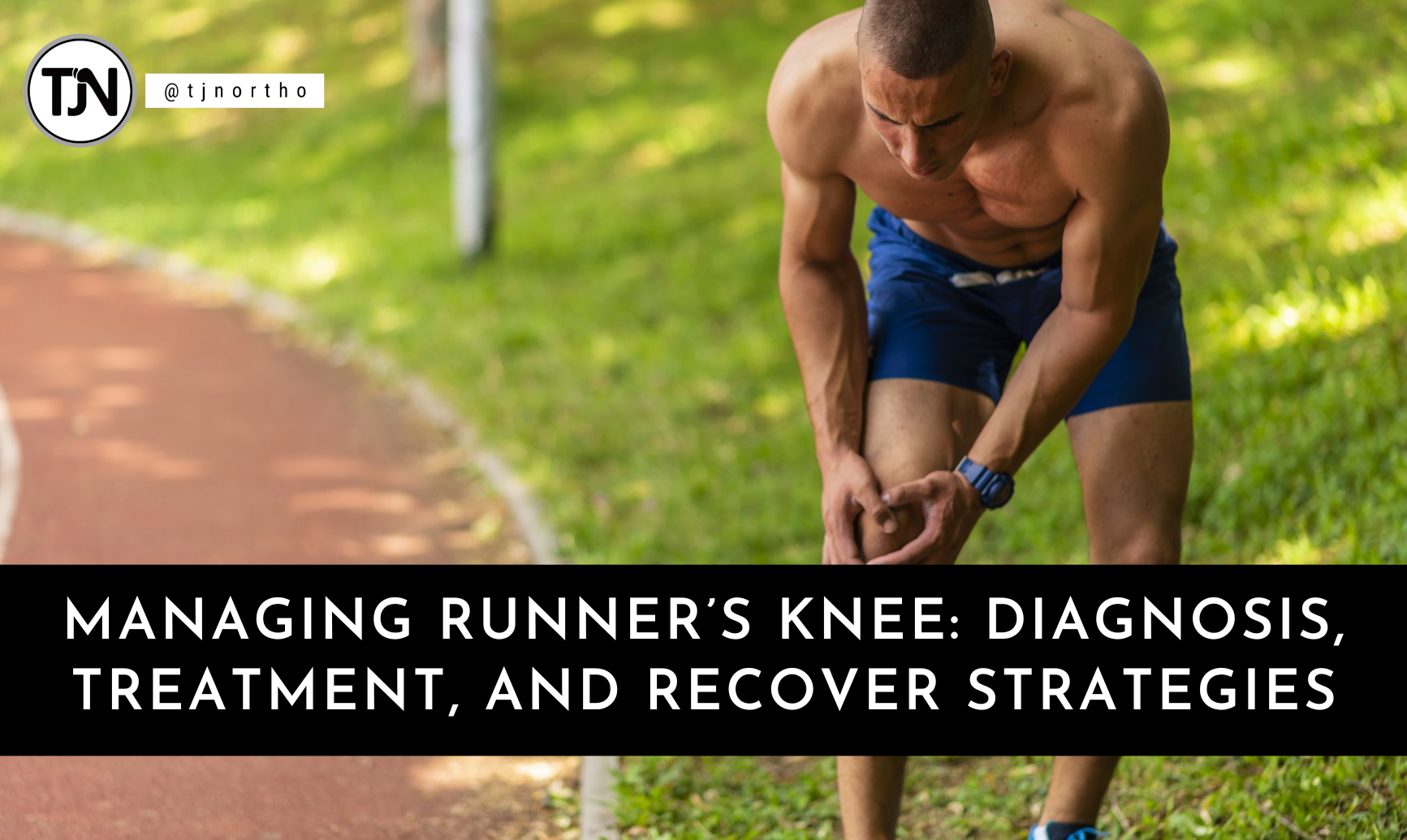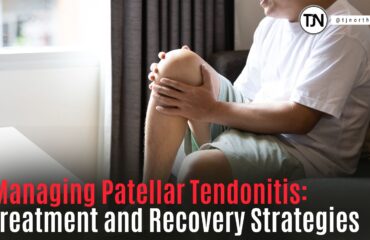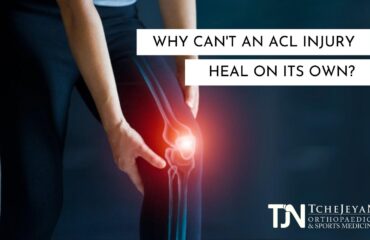Runner’s knee — called Patellofemoral Pain Syndrome by an orthopedist — is a condition that plagues many athletes and active individuals. If you’ve experienced a dull pain around the front of your knee, particularly at the lower end of the thigh bone (femur), you might be all too familiar with this frustrating ailment.
Understanding Runner’s Knee
Runner’s knee is not exclusive to runners; it can afflict anyone who engages in regular physical exercises that stress the knee joint. The pain typically manifests when you’re active, such as running, or even after prolonged periods of sitting with your knees bent. This discomfort can sometimes lead to feelings of weakness and instability in the knee – as though the knee will “give out” when you walk.
Several factors can contribute to the development of runner’s knee:
- Structural Defects: In some cases, a structural defect in the knee joint, such as a high-riding kneecap, can predispose individuals to this condition.
- Muscular Weakness: Weak thigh muscles can fail to properly support the knee joint, leading to increased stress on the patella.
- Muscular Tightness: Tight hamstrings and Achilles tendons can alter the mechanics of the knee joint, exacerbating the condition.
- Poor Foot Support: Insufficient arch support in your footwear can also play a role in the development of runner’s knee.
- Abnormal Gait: Walking or running with your feet rolling inward while your thigh muscles pull the kneecap outward can lead to repetitive stress on the patella.
- Overuse and Injury: Engaging in excessive training or overusing your knee joint can contribute to the onset of runner’s knee. Additionally, a direct knee injury can also trigger this condition.
Recognizing and Treating Runner’s Knee
The hallmark symptoms of runner’s knee include a persistent ache in and around the kneecap, particularly during physical activities or after prolonged periods of knee flexion. In some cases, people with runner’s knee will also hear rubbing, grinding, or clicking sounds when bending and straightening their knees. Finally, the kneecap may even feel painful or tender to the touch. If you are experiencing these symptoms, you should seek a diagnosis from your healthcare provider.
To determine whether you have runner’s knee, your healthcare provider will review your health history and conduct a thorough physical examination. In some cases, X-rays may be required to evaluate the knee’s structure.
Treatment for runner’s knee is multifaceted and tailored to individual circumstances. It typically involves:
- Rest: The primary course of therapy is to cease activities that exacerbate the pain, such as running, until the discomfort subsides.
- Cold Packs and Elevation: Applying cold packs and elevating the affected leg can help reduce inflammation and manage pain.
- Medications: Non-steroidal anti-inflammatory drugs (NSAIDs) like ibuprofen may be recommended to alleviate pain and inflammation.
- Stretching and Strengthening Exercises: Physical therapy exercises targeting the knee, thigh, and hip muscles can improve the knee’s stability and function.
- Arch Support: Proper arch support in your shoes can help correct gait abnormalities and reduce strain on the knee.
Preventing Runner’s Knee
If you think you may be starting to develop runner’s knee or are concerned about developing runner’s knee or other knee joint problems, there are some things you can do to prevent injury and protect knee health. Key strategies include:
- Maintain a Healthy Weight: When you are overweight, your knees bear the stress of that extra weight with every step. Work on losing excess weight to reduce stress on the knee joint.
- Stretch Before Exercise: Incorporate stretching into your pre-activity routine to improve flexibility.
- Gradual Progression: Avoid abrupt increases in physical activity. Instead, progress gradually to allow your body to adapt.
- Proper Footwear: Invest in quality running shoes with adequate arch support and cushioning to reduce jarring of the knee joint.
- Correct Running Form: Focus on running with a slight forward lean and bent knees to reduce the risk of knee strain.
Runner’s knee is a common ailment among active individuals. Still, with proper diagnosis and management, you can fully recover and return to your favorite activities pain-free.
If you’re experiencing knee pain or suspect you have runner’s knee, call TJN Ortho in Thousand Oaks, California, for a consultation. We specialize in diagnosing and treating knee conditions, helping you get back on track to a healthy, active lifestyle. Don’t let runner’s knee hold you back; take the first step towards recovery today.




